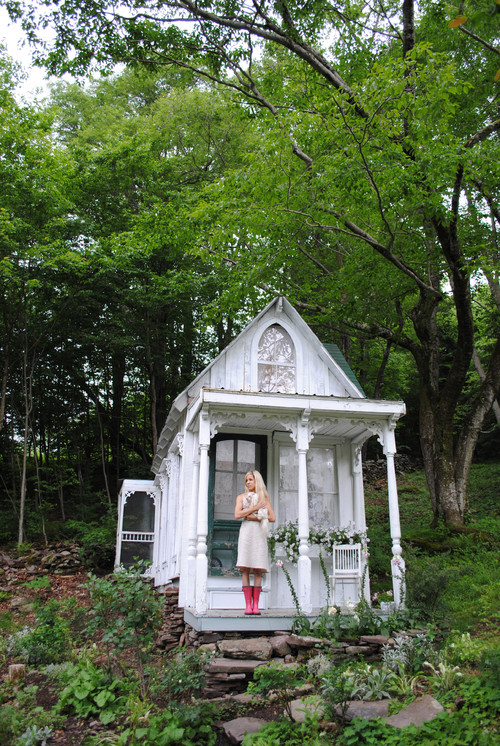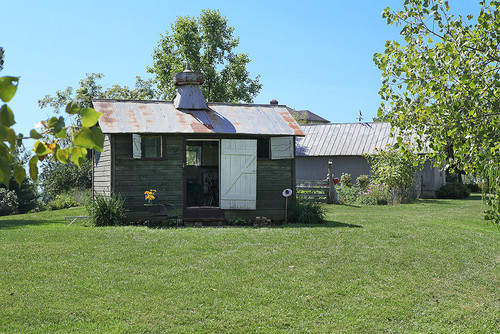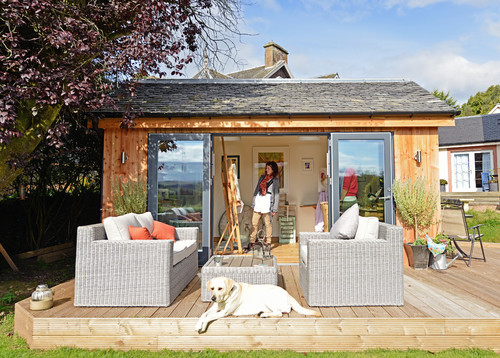Home buyers and sellers planning a kitchen redo have a lot of questions they need answered: What style of cabinets are in? What’s the newest color for countertops? What appliances should I install when there are so many? How do I ensure that my kitchen will be a gathering hub?
The cost of redoing a kitchen is on the rise, averaging $109,000 for an upscale renovation and $55,000 for a mid-range transformation, according to the
2014 Cost vs. Value Report. You can serve as a much-needed resource for clients, advising them on the dos and don’ts when considering a kitchen remodel and helping them identify improvements within their budget.
We asked some favorite kitchen pundits, including John Petrie, president of the National Kitchen & Bath Association and his firm, Mother Hubbard’s Custom Cabinetry in Mechanicsburg, Pa., about everything from paint to hardware to snazzy light fixtures.
Experts say the following dozen trends are generating the hottest buzz in kitchens this year:
1. Safety first. No matter how stunning a kitchen looks or how well it functions, it won’t make one iota of difference if fire occurs. Cooking is the leading cause of home fires, according to the
National Fire Protection Association. Home owners have multiple ways to guarantee safety, such as paying full attention when cooking, knowing to smother a flame with a lid if a fire starts, and knowing how to operate a fire extinguisher properly.
Design choices can also help curb accidents, such as ovens placed within easy reach of all family members, tactile floors to avoid falls, and good illumination.
 2. Cleaner, contemporary lines.
2. Cleaner, contemporary lines. Styles fade in and out, typically following suit with fashion trends and the economy. This year, home owners are gravitating away from traditional and even eclectic designs, instead opting for streamlined, modern looks, says Petrie. This preference is showing up in less-ornamented cabinet fronts, sometimes with a flat door or minimal molding and simpler hardware. Trends also include less exotic countertop patterns, simpler floor choices such as wood planks or bigger tiles with less grout, and pared-back color palettes.
If your clients prefer some texture, materials like brick warm up a space with a handcrafted look. Try applying it to novel areas — how about on the ceiling?
 3. Open wide
3. Open wide. Whether it’s small or large, a kitchen that opens to other rooms — including the outdoors — offers space to cook. Clients could consider the different zones of a kitchen, such as eating and living space, says designer Jeffrey Collé of Estates by Jeffrey Collé in East Hampton, N.Y. His upscale remodeled kitchens often feature fireplaces, TVs, sound systems, and butler’s pantries — they’re now referred to as “caterer’s kitchens” since they include space and equipment to cook and clean up.
 4. White still tops.
4. White still tops. While white continues to maintain its front-runner status because of its classic chic connotation, gray has increased in popularity, showing up in stained and painted cabinets and countertops fabricated from quartz, quartzite, limestone, granite, and marble with lots of gray veining. If home owners are making choices for a kitchen where they’ll live for years, opting for gray makes sense, but if they’re making improvements to sell, it may be smarter to stay with more buyers’ preference for white. Despite conventional wisdom, some pops of color can liven up a kitchen.
%20copy.jpg) 5. Wood neck-to-neck with porcelain tile.
5. Wood neck-to-neck with porcelain tile. These two choices command the greatest attention for flooring. Both are easy on feet and highly durable, and many porcelain tiles mimic wood so well they’re hard to differentiate. For those who favor wood, narrower widths are in again — 2 to 3 inches typically fit contemporary taste; for those who prefer porcelain, bigger tiles — 12 by 24 inches — are making inroads.
6. Quartz is the new granite. Because of its ubiquity, due in part to so many imports and lower prices, granite has lost star power. What’s taking its place is quartz, which is similar to
quartzite; it’s easier to maintain and affordable (though not always as inexpensive as the least expensive granite), and it offers a less-fussy patterned appearance to suit contemporary styles. For home owners who still love marble for its old-fashioned cachet yet fear its porosity and stainability, there are quartzes that are difficult to differentiate, particularly from white Carrera marble.
PRO36%206%20GAS%20GI%20copy.jpg) 7. Induction, steam ovens, microwave drawers, and more.
7. Induction, steam ovens, microwave drawers, and more.There’s lots happening on the appliance front; some trends have been around but are increasing in popularity, while others are brand new. But a modern layout continues to separate cooking equipment so multiple cooks can work together without getting in each other’s way.
Here are some examples of appliance trends:
- Microwave drawers that are easier for all generations to reach than those placed above a range or cooktop.
- Induction cooktops that heat up and cool down faster, saving energy. Their higher prices may deter some, as may their need for higher amps, says Shirley Hood, appliance salesperson and spokesperson for Abt Electronics and Appliances in Glenview, Ill.
- More powerful gas range burners that offer higher output, even 18,000 BTUs.
 Steam ovens that cook faster and allow for healthier food preparation, along with a second convection oven; some steam ovens include a cleaning function that permits spills to be removed without heating and smelling up a kitchen for hours, says Hood.
Steam ovens that cook faster and allow for healthier food preparation, along with a second convection oven; some steam ovens include a cleaning function that permits spills to be removed without heating and smelling up a kitchen for hours, says Hood.- French-door style refrigerators that make it easier to view contents when doors are opened, they’re now available from some manufacturers with four doors.
- Hot-water dispensers on refrigerator doors.
- Refrigerator drawers, which can be located anyplace in a kitchen or family room for easy access and let family members get to fresh foods without crowding the main work zone.
- Beverage centers and wine coolers that are placed strategically at points of use.
 Dishwashers that have three and four racks for silverware and utensils; also, models that use less water, are quieter and bigger, and place jets along side walls.
Dishwashers that have three and four racks for silverware and utensils; also, models that use less water, are quieter and bigger, and place jets along side walls.- Integrated appliances, better camouflaged behind panels to dress up open-style kitchens.
- Faucets that conserve water and have touchless controls.
- Long, deep, one-bowl sinks, sometimes with cutting boards to conserve space.
- Smaller appliances that fit into smaller condos and homes.
- Built-in coffee makers fully in view. Everyone wants to be a barista!
8. Drawers beneath countertops rather than doors. Rather than have to go through a two-step process of opening below counter cabinets and reaching into and rummaging through shelves, drawers that pull out and present all their contents are taking hold. The one downside: These shelves aren’t adjustable as are those in many cabinets.
 9. Glass splash and more
9. Glass splash and more. Backsplashes have become a major focal point; subway tiles are still popular, though now with beveled edges; matte rather than glossy finishes; a variety of colors rather than just classic white; and in larger 4-by-10-inch formats rather than traditional 3-by-6-inch sizes. Today’s trend is also to lay the tiles in vertical rather than horizontal rows. Bigger glass tiles in shimmery hues are grabbing attention, too—and they represent a green choice, made out of recycled materials. Another option is handcrafted tiles with an Art Deco and Frank Lloyd Wright influence.
 10. LED lighting.
10. LED lighting. Because it’s been mandated by certain states and the federal government has required that incandescent lamps be phased out unless sufficiently energy efficient, more professionals and home owners are making the switch to energy-wise LEDs underneath cabinets and in cans, pendants, chandeliers, and sconces. Costs have come down for LEDs, and lighting trends lean toward fewer but larger pendants above islands and more decorative fixtures above tables.
11. Look, ma, no desk. Due to the trend of using smaller personal electronic devices—computers, tablets, phones—fewer homeowners need a separate desk. Nowadays, a designated counter with several outlets, sometimes concealed, becomes the go-to charging station replacing a desk.
 12. Eating in and cooking out.
12. Eating in and cooking out. An eating area is more de rigueur, whether it’s a big table, a corner banquette with a table, or a countertop. And outdoor kitchens, with varying dimensions depending on climate and budgets, remain popular. Many home owners no longer want the full panoply of outdoor appliances, which were often underutilized and overpriced; a good grill sometimes may be sufficient.
Sources: Charles B. Clark Jr., vice president of engineering services at the Brick Industry Association, Reston, Va.; Jeffrey Collé, Estates by Jeffrey Collé, East Hampton, N.Y.; Dan Hechtkopf and Reid Heidenry, South Beach Investment Realty, Miami Beach, Fla.; Shirley Hood, marketing, ABT Electronics and Appliances, Glenview, Ill.; Claudia Juestel, Adeeni Design Group, San Francisco; John Petrie, president, Mother Hubbard’s Custom Cabinetry, Mechanicsburg, Pa..; Kristin Petro, Kristin Petro Interiors, Elmhurst, Ill.





 2. Cleaner, contemporary lines. Styles fade in and out, typically following suit with fashion trends and the economy. This year, home owners are gravitating away from traditional and even eclectic designs, instead opting for streamlined, modern looks, says Petrie. This preference is showing up in less-ornamented cabinet fronts, sometimes with a flat door or minimal molding and simpler hardware. Trends also include less exotic countertop patterns, simpler floor choices such as wood planks or bigger tiles with less grout, and pared-back color palettes.
2. Cleaner, contemporary lines. Styles fade in and out, typically following suit with fashion trends and the economy. This year, home owners are gravitating away from traditional and even eclectic designs, instead opting for streamlined, modern looks, says Petrie. This preference is showing up in less-ornamented cabinet fronts, sometimes with a flat door or minimal molding and simpler hardware. Trends also include less exotic countertop patterns, simpler floor choices such as wood planks or bigger tiles with less grout, and pared-back color palettes. 3. Open wide. Whether it’s small or large, a kitchen that opens to other rooms — including the outdoors — offers space to cook. Clients could consider the different zones of a kitchen, such as eating and living space, says designer Jeffrey Collé of Estates by Jeffrey Collé in East Hampton, N.Y. His upscale remodeled kitchens often feature fireplaces, TVs, sound systems, and butler’s pantries — they’re now referred to as “caterer’s kitchens” since they include space and equipment to cook and clean up.
3. Open wide. Whether it’s small or large, a kitchen that opens to other rooms — including the outdoors — offers space to cook. Clients could consider the different zones of a kitchen, such as eating and living space, says designer Jeffrey Collé of Estates by Jeffrey Collé in East Hampton, N.Y. His upscale remodeled kitchens often feature fireplaces, TVs, sound systems, and butler’s pantries — they’re now referred to as “caterer’s kitchens” since they include space and equipment to cook and clean up. 4. White still tops. While white continues to maintain its front-runner status because of its classic chic connotation, gray has increased in popularity, showing up in stained and painted cabinets and countertops fabricated from quartz, quartzite, limestone, granite, and marble with lots of gray veining. If home owners are making choices for a kitchen where they’ll live for years, opting for gray makes sense, but if they’re making improvements to sell, it may be smarter to stay with more buyers’ preference for white. Despite conventional wisdom, some pops of color can liven up a kitchen.
4. White still tops. While white continues to maintain its front-runner status because of its classic chic connotation, gray has increased in popularity, showing up in stained and painted cabinets and countertops fabricated from quartz, quartzite, limestone, granite, and marble with lots of gray veining. If home owners are making choices for a kitchen where they’ll live for years, opting for gray makes sense, but if they’re making improvements to sell, it may be smarter to stay with more buyers’ preference for white. Despite conventional wisdom, some pops of color can liven up a kitchen. %20copy.jpg) 5. Wood neck-to-neck with porcelain tile. These two choices command the greatest attention for flooring. Both are easy on feet and highly durable, and many porcelain tiles mimic wood so well they’re hard to differentiate. For those who favor wood, narrower widths are in again — 2 to 3 inches typically fit contemporary taste; for those who prefer porcelain, bigger tiles — 12 by 24 inches — are making inroads.
5. Wood neck-to-neck with porcelain tile. These two choices command the greatest attention for flooring. Both are easy on feet and highly durable, and many porcelain tiles mimic wood so well they’re hard to differentiate. For those who favor wood, narrower widths are in again — 2 to 3 inches typically fit contemporary taste; for those who prefer porcelain, bigger tiles — 12 by 24 inches — are making inroads.PRO36%206%20GAS%20GI%20copy.jpg) 7. Induction, steam ovens, microwave drawers, and more.There’s lots happening on the appliance front; some trends have been around but are increasing in popularity, while others are brand new. But a modern layout continues to separate cooking equipment so multiple cooks can work together without getting in each other’s way.
7. Induction, steam ovens, microwave drawers, and more.There’s lots happening on the appliance front; some trends have been around but are increasing in popularity, while others are brand new. But a modern layout continues to separate cooking equipment so multiple cooks can work together without getting in each other’s way. Steam ovens that cook faster and allow for healthier food preparation, along with a second convection oven; some steam ovens include a cleaning function that permits spills to be removed without heating and smelling up a kitchen for hours, says Hood.
Steam ovens that cook faster and allow for healthier food preparation, along with a second convection oven; some steam ovens include a cleaning function that permits spills to be removed without heating and smelling up a kitchen for hours, says Hood. Dishwashers that have three and four racks for silverware and utensils; also, models that use less water, are quieter and bigger, and place jets along side walls.
Dishwashers that have three and four racks for silverware and utensils; also, models that use less water, are quieter and bigger, and place jets along side walls. 9. Glass splash and more. Backsplashes have become a major focal point; subway tiles are still popular, though now with beveled edges; matte rather than glossy finishes; a variety of colors rather than just classic white; and in larger 4-by-10-inch formats rather than traditional 3-by-6-inch sizes. Today’s trend is also to lay the tiles in vertical rather than horizontal rows. Bigger glass tiles in shimmery hues are grabbing attention, too—and they represent a green choice, made out of recycled materials. Another option is handcrafted tiles with an Art Deco and Frank Lloyd Wright influence.
9. Glass splash and more. Backsplashes have become a major focal point; subway tiles are still popular, though now with beveled edges; matte rather than glossy finishes; a variety of colors rather than just classic white; and in larger 4-by-10-inch formats rather than traditional 3-by-6-inch sizes. Today’s trend is also to lay the tiles in vertical rather than horizontal rows. Bigger glass tiles in shimmery hues are grabbing attention, too—and they represent a green choice, made out of recycled materials. Another option is handcrafted tiles with an Art Deco and Frank Lloyd Wright influence. 10. LED lighting. Because it’s been mandated by certain states and the federal government has required that incandescent lamps be phased out unless sufficiently energy efficient, more professionals and home owners are making the switch to energy-wise LEDs underneath cabinets and in cans, pendants, chandeliers, and sconces. Costs have come down for LEDs, and lighting trends lean toward fewer but larger pendants above islands and more decorative fixtures above tables.
10. LED lighting. Because it’s been mandated by certain states and the federal government has required that incandescent lamps be phased out unless sufficiently energy efficient, more professionals and home owners are making the switch to energy-wise LEDs underneath cabinets and in cans, pendants, chandeliers, and sconces. Costs have come down for LEDs, and lighting trends lean toward fewer but larger pendants above islands and more decorative fixtures above tables. 12. Eating in and cooking out. An eating area is more de rigueur, whether it’s a big table, a corner banquette with a table, or a countertop. And outdoor kitchens, with varying dimensions depending on climate and budgets, remain popular. Many home owners no longer want the full panoply of outdoor appliances, which were often underutilized and overpriced; a good grill sometimes may be sufficient.
12. Eating in and cooking out. An eating area is more de rigueur, whether it’s a big table, a corner banquette with a table, or a countertop. And outdoor kitchens, with varying dimensions depending on climate and budgets, remain popular. Many home owners no longer want the full panoply of outdoor appliances, which were often underutilized and overpriced; a good grill sometimes may be sufficient.










